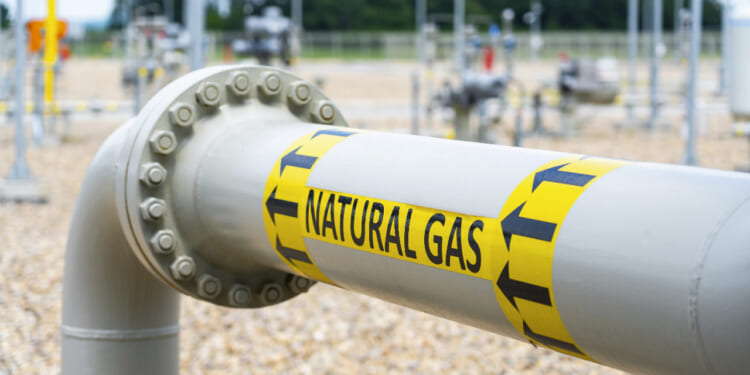Nuclear energy and natural gas remain potent forces that are shaping global economic and technological strategies.
The ambitious geo-economic and geo-technological strategic framework for the Pacific basin that President Trump has brought with him on his visit to Asia has one indisputable requirement for success: energy abundance.
In the herculean task of reorienting global supply chains from running entirely through Chinese-controlled choke points, energy is critical. Some of the deals the United States is making with its Indo-Pacific partners relate to the extraction and processing of critical minerals and rare earth minerals; others deal with the creation of the data centers and manufacturing centers that will be critical for harnessing and producing Fourth Industrial Revolution goods and services—components that will be vital from sixth-generation defense systems to food security to health care.
States across the Pacific basin only need to watch what is happening in Europe to appreciate the importance of energy abundance. The European Union’s adoption of what effectively were “energy diet” policies (designed to spur the undertaking of measures for greater efficiency and innovation in energy consumption) and the cutoff of direct large-scale purchases of inexpensive Russian energy in the aftermath of the 2022 invasion of Ukraine are creating conditions for effective “de-industrialization.”
The states of Southeast Asia have embraced efforts to improve their energy efficiency but still project that their energy demand will grow and require new sources of supply. Countries in the region also are eager to avoid the Intel dilemma: how a proposed multi-billion dollar investment in Vietnam’s high-tech sector fell through because of “the undersupply of reliable electricity in Vietnam.”
China is very happy to become an energy provider of choice—either through the provision of new technologies (especially in renewables) or by assuming the role of broker of Russian energy as Western sanctions make it harder for the United States’ partners in the region to directly contract with Moscow for oil and gas. China expects that as new energy infrastructure (such as the Power of Siberia 2 gas pipeline) comes on line, China will not only bank the savings it receives from Russia (both by purchasing energy in yuan rather than in dollars, as well as the discounts applied by Russian energy firms) but can then resell that energy to others in the region. This, of course, works directly against the US strategic imperative to give Indo-Pacific states greater leeway in their dealings with China.
On a more strategic consideration as well, having US bases and facilities in the region being dependent on Chinese firms for power also creates vulnerabilities.
The US approach envisions two broad approaches to energy security and abundance. The first is to create a natural gas “bridge” from Alaska across the Pacific to Asia’s industrial powerhouses. The trans-Alaska pipeline gas project connecting the North Slope gas fields to liquefaction and port facilities at Cook Inlet is expected to have a capacity to supply some 20 million tons of natural gas per year and to be able to export LNG across the Pacific to Japan, Taiwan, Korea, and Thailand. This project now has commitments for 11 million tones—and requires commitments for an additional five million to secure profitability. In turn, the success of the Alaska project will spur the development of other Pacific-facing LNG export terminals, as the United States’ exports of gas are expected to grow by 50 percent by 2030.
Not only do these projects require investment in LNG, but they are also a way to develop consortia among Japanese, Korean, and American shipbuilders to construct additional and more advanced LNG carriers—to permit a steady and constant flow (and reduce costs) for Asian consumers to receive US gas.
The other broad area is in the realm of nuclear power.
Nuclear power is “the only real choice to power the lion’s share of the massive growth expected in data centers around the world, not to mention the general surge in the world’s energy needs.” Nuclear power offers a solution to problems like Vietnam’s Intel dilemma—the ability to generate electricity on a large scale at a reasonable cost. Distributed nuclear power—including the development of small modular reactors—also offers greater resilience against the disruption of national power grids due to storms and weather, as well as the possibility of deliberate state action.
The experience of Ukraine, where cities and regions depend on a very centralized energy grid—thus making the country now vulnerable to large-scale disruption—is something that Asian states would want to avoid.
Again, the best way forward is to develop a consortium among Korean, Japanese, and American firms for the construction and maintenance of nuclear power stations—combining the comparative advantages each state has in the nuclear field.
This, then, connects back to the imperative to shift supply chains, particularly for critical minerals, away from China. Mining, natural gas, shipbuilding, and nuclear power are all pieces of an energy dominance strategy that can reinvigorate the United States’ position in the Pacific—and it requires forging and sustaining the partnerships that can achieve these ends.
About the Author: Nikolas K. Gvosdev
Dr. Nikolas Gvosdev is a 2024 Templeton Fellow and the Director of the National Security Program at the Foreign Policy Research Institute. He is also a Senior Fellow in the Eurasia Program and Editor of Orbis: FPRI’s Journal of World Affairs. Gvosdev is a Professor of National Security Affairs, holding the Captain Jerome E. Levy Chair in Economic Geography and National Security at the US Naval War College in Newport, Rhode Island. He was formerly the Editor of The National Interest and a Senior Fellow at The Nixon Center in Washington, DC. Dr. Gvosdev received his doctorate from St Antony’s College, Oxford University, where he studied on a Rhodes Scholarship.
Image: Shutterstock/sdf_qwe
















